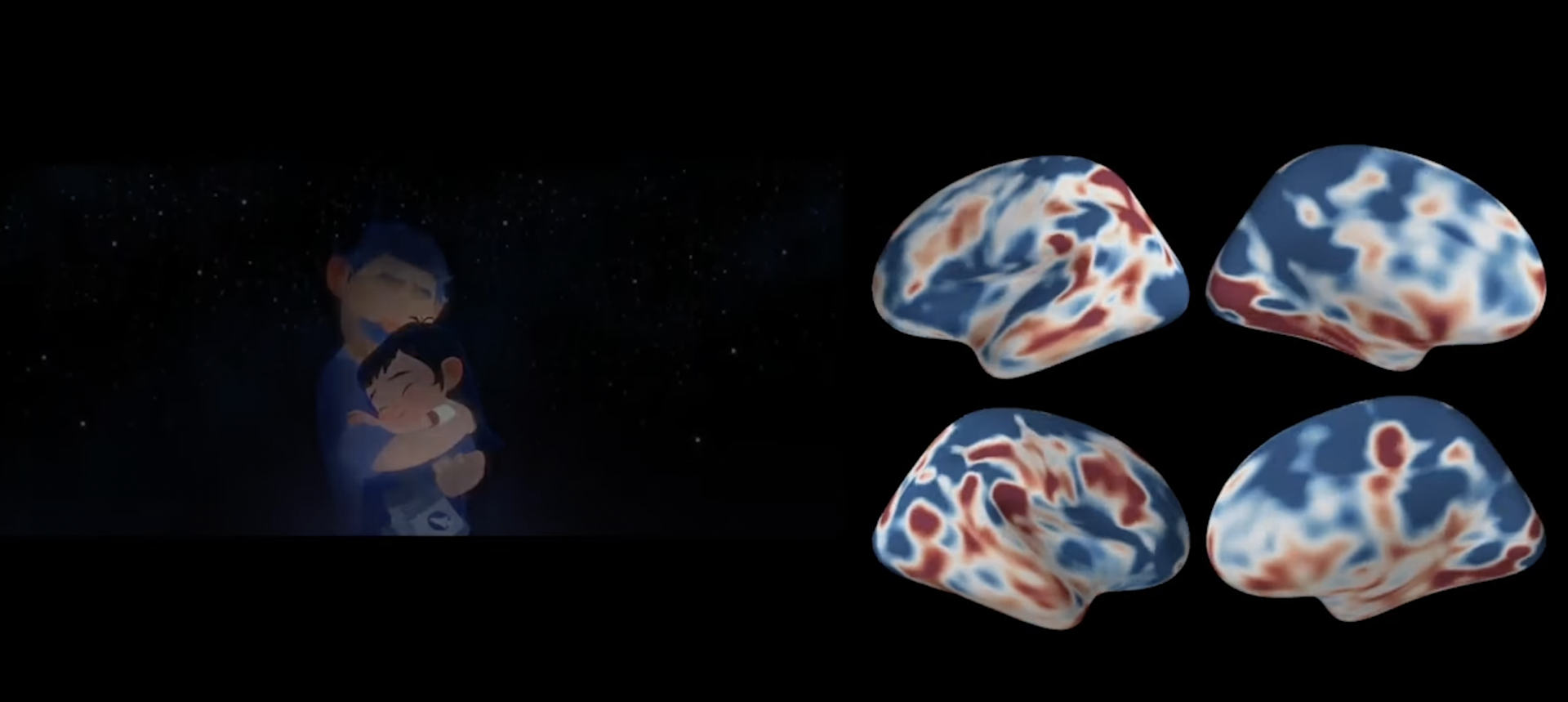Analysis: Do people ever truly feel both positive and negative at the same time? Or do we just switch quickly back and forth?
By Anthony Gianni Vaccaro, USC Dornsife College of Letters, Arts and Sciences
Countless parents across the country recently dropped their children off at college for the first time. This transition can stir a whirlwind of feelings: the heartache of parting, sadness over a permanently changed family dynamic, the uncertainty of what lies ahead – but also the pride of seeing your child move toward independence. Some might describe the goodbye as bittersweet, or say that they're feeling mixed emotions.
In that scenario, what would you do if I asked you to rate how you felt on a scale from 1-9, with 1 being the most negative and 9 the most positive? This question seems silly given the circumstances – how should you rate this blend of bad and good? Yet, this scale is what psychology researchers often use to survey feelings in scientific studies, treating emotions as either positive or negative, but never both.
I'm a neuroscientist who studies how mixed emotions are represented in the brain. Do people ever truly feel both positive and negative at the same time? Or do we just switch quickly back and forth?
From USC Dornsife, Do mixed emotions exist?
What emotions do for you
Scientists sometimes define emotions as states of the brain and body that motivate you toward or away from things. People typically experience them as either positive or negative. If you're walking in the woods and see a bear, your heart rate and breathing accelerate, giving you the urge to flee – likely helping you make a decision that keeps you alive. Many scientists would label that reaction as the emotion of "fear."
Similarly, warm feelings around loved ones make you want to stay around them and nurture those relationships, helping strengthen your social network and support system. This approach-and-avoid view of emotions helps explain why emotions evolved and how they affect decision-making. Scientists have used it as a guiding principle when trying to figure out the biology behind emotions.
But mixed emotions do not fit into this framework. If opposite biological systems inhibit each other, and if emotions are biological, you can't experience opposites in the same moment. This reasoning would mean it's impossible to hold two opposite emotions at once; you must instead be flipping back and forth. Ever since scientists proposed the first theories on the biological foundations of emotion, this is how they've conceptualised mixed emotions.

Untangling the biology of mixed emotions
Mainstream methods for measuring feelings still treat positive and negative as opposite sides of a spectrum. But researchers find that study participants commonly report mixed emotions. For instance, people across cultures experience some feelings, such as nostalgia and awe, as simultaneously positive and negative.
One research group found that volunteers' physiological responses – such as heart rate and skin conductance – display unique patterns during experiences that are both disgusting and funny, compared with either category separately. This implies that disgusted and amused reactions are indeed occurring simultaneously to create something new.
Read more: How to read emotions in faces
In a seemingly contradictory finding, research that used functional magnetic resonance imaging, or fMRI, to study brain responses to disgusting humour did not find a pattern of brain activity that was distinct from plain disgust. The brain states of people reporting being both disgusted and amused seemed to reflect only disgust – not a unique pattern for a new mixed emotion.
But fMRI studies generally rely on averaging brain activity across people and time. The heart of the question – experiencing truly mixed emotions versus fluctuating between positive and negative states – concerns what the brain is doing over time. It is possible that by looking at the average brain activity across time, scientists end up with a pattern that looks a lot like one emotion – in this case, disgust – but are missing important information about how activity changes or stays the same second-to-second.
Mixed emotions in the brain
To dig in to that possibility, I ran a study to see whether mixed emotions were related to a unique brain state that held steady over time. While in the MRI machine, participants watched a bittersweet animated short film about a young girl's lifelong pursuit, with her father's support, to become an astronaut. Spoiler alert: Her dad dies. After scanning, those same subjects rewatched the video and labeled the exact times they had felt positive, negative and mixed emotions.

My colleagues and I discovered that mixed emotions didn't show unique, consistent patterns in deeper brain areas like the amygdala, which plays an important role in quick responses to emotionally important items. Strikingly, the insular cortex, a part of the brain that connects deeper brain regions with the cortex, had consistent and unique patterns for both positive and negative emotions, but not for mixed ones. We took this finding to mean that regions such as the amygdala and insular cortex were processing positive and negative emotions as mutually exclusive.
But we did see unique, consistent patterns in cortical regions such as the anterior cingulate, which plays an important role in processing conflict and uncertainty, and the ventromedial prefrontal cortex, which is important for self-regulation and complex thinking. These brain regions in the cortex that carry out more advanced functions appear to represent much more complex states, allowing someone to truly feel a mixed emotion. Brain regions such as the anterior cingulate and ventromedial prefrontal cortex integrate many sources of information – essential for being able to form a mixed emotion.
Our findings also fit with what scientists know about brain and emotional development. Interestingly, kids do not begin to understand or report mixed emotions until later in childhood. This timeline matches up with what researchers know about how development of these brain regions leads to more advanced emotional regulation and understanding.
What happens next
This study revealed something new about how complex feelings are formed in the brain, but there is much more to learn. Mixed emotions are so interesting, in part, because of their potential role during important life events. Sometimes, mixed emotions help you cope with big changes and turn into cherished memories. For example, you may experience both positive and negative feelings when your friends throw a big going away party before you move to another city for your dream job.
Other times, mixed emotions are an ongoing source of distress. Even if you know you should break up with a romantic partner, that doesn't mean all the positive feelings you have about them automatically go away, or that a split won't bring some pain.
What leads to this difference in outcome? Might these differences have to do with how the brain represents these mixed emotional states over time? A better understanding of mixed emotions might help people make sure these kinds of strong feelings become cherished memories that help them grow, instead of a distressing goodbye they fail to get over.
Anthony Gianni Vaccaro is a Postdoctoral Research Associate in Psychology at USC Dornsife College of Letters, Arts and Sciences. This article was originally published by The Conversation.
Follow RTÉ Brainstorm on WhatsApp and Instagram for more stories and updates
Disclaimer: The copyright of this article belongs to the original author. Reposting this article is solely for the purpose of information dissemination and does not constitute any investment advice. If there is any infringement, please contact us immediately. We will make corrections or deletions as necessary. Thank you.






